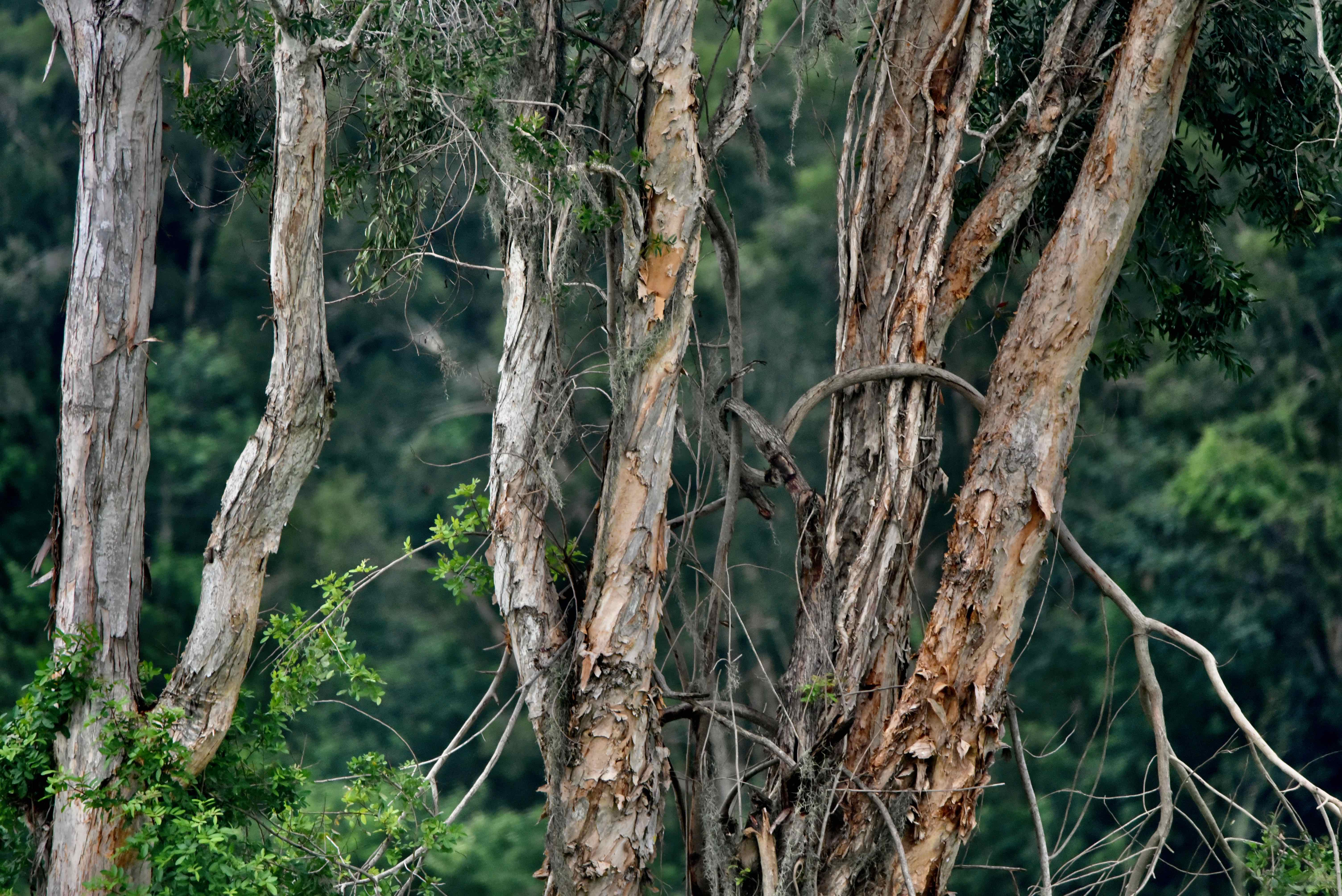
Melaleuca, photographed at near Loxahatchee National Wildlife Refuge, Boynton Beach, Pam Beach County, in June 2021.
Odd thing No. 1 about Melaleuca, Melaleuca quinquenervia: It's an invasive here in South Florida, crowding out native species from thousands of acres in the Everglades, while sopping up precious ground water like a sponge. Meanwhile, just about every place else on earth that melaleuca is found, including just up the road in central Florida, it's pretty well behaved.
Odd thing No. 2: While land managers and scientists struggle to get rid of the tree here, it's actually disappearing in parts of its natural range in Australia, where land managers and scientists are struggling to preserve it.
Melaleuca made its way to Florida in 1906 as part of the massive turn-of-the-century effort to dry up the Everglades during the administration of noted environmentalist and friend of nature, Gov. Napoleon Bonaparte Broward.
Canals were dug, rivers and creeks disappeared and melaleuca did its thing pretty much without interference — until the light bulb went on in someone's head that Florida's watery wilds had value. By then, melaleuca covered tens of thousands of acres of the Everglades and other places in South Florida. Despite efforts to control it, meleuca still covers some 500,000 acres in the Everglades. At one point, underfunded efforts to control melaleuca and other exotic invaders in the backcountry of Loxahatchee National Wildlife Refuge put the future of the refuge on the line.
Melaleuca is a native of Australia, New Caledonia, the Solomon Islands, New Guinea and Indonesia. It likes wet habitats — in South Florida, that means wet pine flatwoods, depressions, swamps and rock ridge pinewoods in Miami-Dade County. It can grow to 50 to 70 feet; it has long, leathery leaves that are two to five inches long.
The bark is thick, made up of many paper-thin layers, the outer portions of which are loose and ragged-looking. It puts out bottlebrush-like spikes of yellow-white flowers. The leaves are narrow, eliptical, with veins that run the length of the leaf parallel to each other. They are arranged alternately along the stem. As noted, it can form extremely dense stands that crowd out native trees and understory plants. It is an evergreen, and cold sensitive. It's not found north of central Florida, but that hasn't stopped a number of states where melaleuca couldn't possibly survive in the wild — Vermont, for one — from declaring it a noxious weed.
One tree can put out seeds literally by the millions. A single flower spike can produce as many as 30 capsules, each filled with 200 to 350 seeds. Do the math, and the numbers get big, fast. Not only that, melaleuca reaches reproductive maturity faster than most trees. And it flowers all year.
And like invasives generally, it has no natural enemies here that might check its spread. It shelters an invasive bug called lobate lac scale that can devastate other plants but does little to melaleuca. Some biological controls have been tried; fire, combined with herbicides also have been employed. Fire alone actually helps melaleuca spread by dispersing seeds.
So is there anything good that can be said about melaleuca? Emphatically, yes! it makes great mulch! Seriously. The wood has oils that resist termites.
It is a member of Myrtaceae, or the myrtle family.
Click on photo for larger image
Links for Melaleuca



